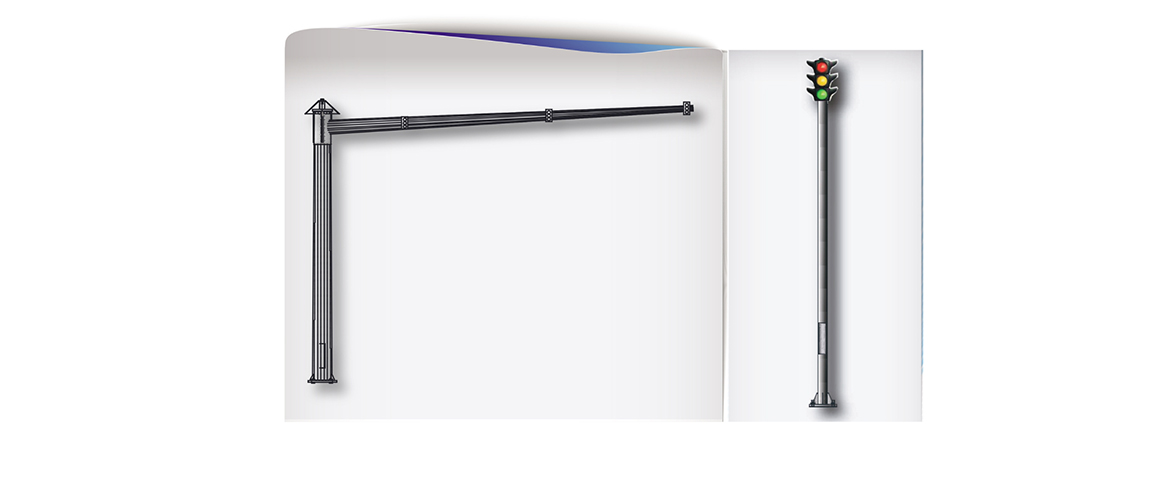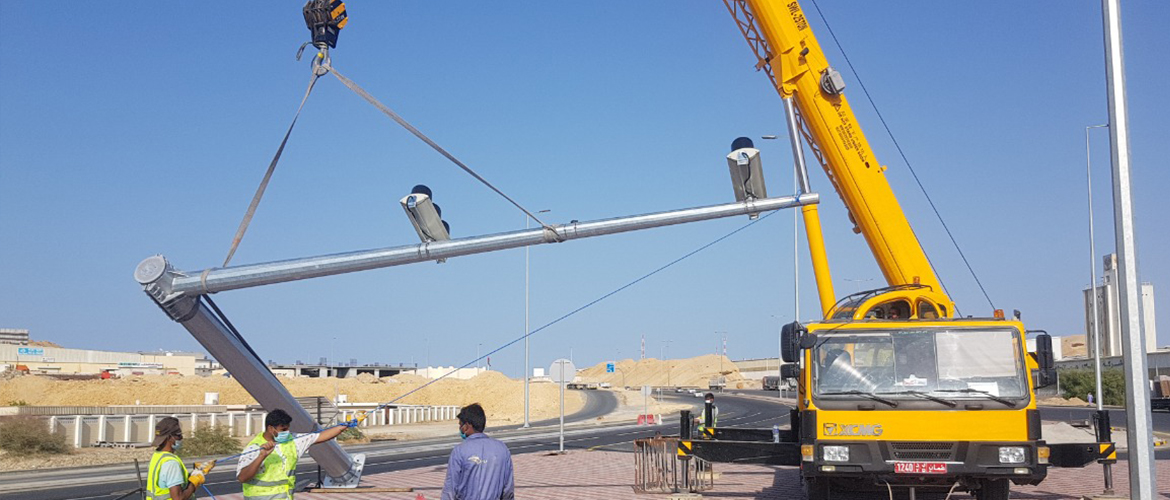Traffic Signal Poles
Traffic signal poles, also known as traffic light poles or signal support structures, are essential components of transportation infrastructure used to mount traffic signals at intersections, pedestrian crossings, and other locations where traffic control is necessary. These poles provide a secure and elevated platform for the installation of traffic signal heads, pedestrian crossing signals, and other related equipment.
Height and Configuration: Traffic signal poles are designed to elevate traffic signal heads and ensure visibility to approaching motorists and pedestrians. The height of the poles can vary depending on factors such as road width, intersection layout, and pedestrian requirements. Poles are often installed in a vertical configuration, although some intersections may require multiple poles to accommodate various signal heads and signages.
Mounting Options: Traffic signal poles provide mounting options for different types of signal heads, including red, yellow, and green lights for vehicles, as well as pedestrian crossing signals such as the "walk" and "don't walk" indicators. The poles may have multiple arms or brackets to support these signal heads and ensure proper alignment and visibility.
Safety Features: To enhance safety, traffic signal poles often include additional features such as reflectors or reflective tapes to improve visibility at night or in low-light conditions. Some poles may also incorporate breakaway mechanisms designed to detach or collapse in the event of a collision, reducing the potential for severe damage or injury.
Traffic signal poles must comply with local transportation and engineering standards, which outline specifications for factors such as pole height, wind load resistance, color, visibility, and accessibility requirements. These standards ensure consistency and safety in traffic signal installations.



